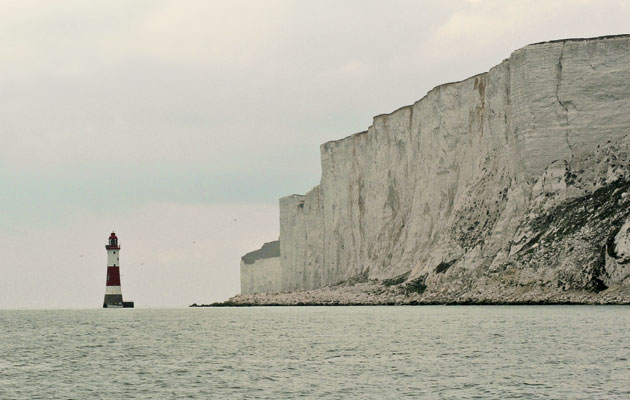Tom Cunliffe has assessed hundreds of sailors for the RYA Yachtmaster exam. He shares a few skipper's tips with us...
Back up

If a strong wind keeps blowing your bow off, point your stern straight at the pontoon and step off the transom
Most modern yachts don’t enjoy looking up to a big wind at slow speed. They’d much rather take it on the quarter. In fact, if you leave one to her own devices with no power or sail, she’ll probably end up lying with the wind well abaft the beam.
This is why it’s a killer of a job to try and get alongside a weather dock in a gale. Every time you slow down, unless you’ve a bow thruster, the boat’s head blows away before the crew can step ashore. The answer, believe it or not, is to go astern slowly up to the pontoon with the crew on the sugar scoop.
You’ll have perfect control as you back in, they can take a line ashore with confidence, and once the stern is secure, it’s just a matter of running a bow line round and heaving it in, helped by a winch if need be.
Suck it dry

Treat yourself to a decent oil extraction pump with a captive oil reservoir, such as this Seago Extract-It
A month or two back, I was talking about regular oil changes being the sort of job that any of us can handle. Of course, having done it all my life, I assumed that everyone else would know how to get the used oil out of the engine. Bad mistake.
On a car, you just undo the sump plug and dump the filthy stuff into a washing-up bowl.
On a boat, of course, you can’t get under the engine, so here’s the deal. Give the unit a quick run to warm up the oil. This thins it. Now shove a stirrup pump (available from all good chandlers) with a long hollow probe on the end down the dipstick hole and pump away, having first balanced your washing-up bowl or old oil container somehow. If this falls over, it’s tears! Happily, you can now buy inexpensive units that incorporate both pump and container: hands-free and no chance of disaster. My order’s in!
Katabatic winds

Cliffs, mountains and headlands, like Beachy Head (above), can all dish up katabatic winds that make life lively for sailors
A katabatic wind takes its name from the ancient Greek Katabatos, which means, approximately, ‘descending’.
I’ve been victim of unexpected katabatic winds in places as far removed as Norway, Sardinia, the Black Hills of Dakota and the English Channel. Here’s what happens: High on a hill, air radiates away its heat, often at the end of the day, and cools dramatically. If there’s a glacier handy, that’ll do the trick, but you don’t need one. Once the air becomes heavy enough, it literally rolls down the local mountain and lands on any luckless sailor operating below. The one that whacked me in Sardinia waited until just after dark before piling a whole raft of poorly anchored stern-to yachts onto my British stalwart, which I’d naively moored at what was now the leeward end of the line. The ‘Norsky’ dumped like a thunderclap out of clear sky in mid-afternoon and blew out my jib. The American one destroyed a disorderly motorcycle rally, and the effect off Beachy Head dished me up a nice sailing breeze just before midnight.
You never know what’s waiting around the corner on the coast. Keep a weather eye open, even on a quiet night.




